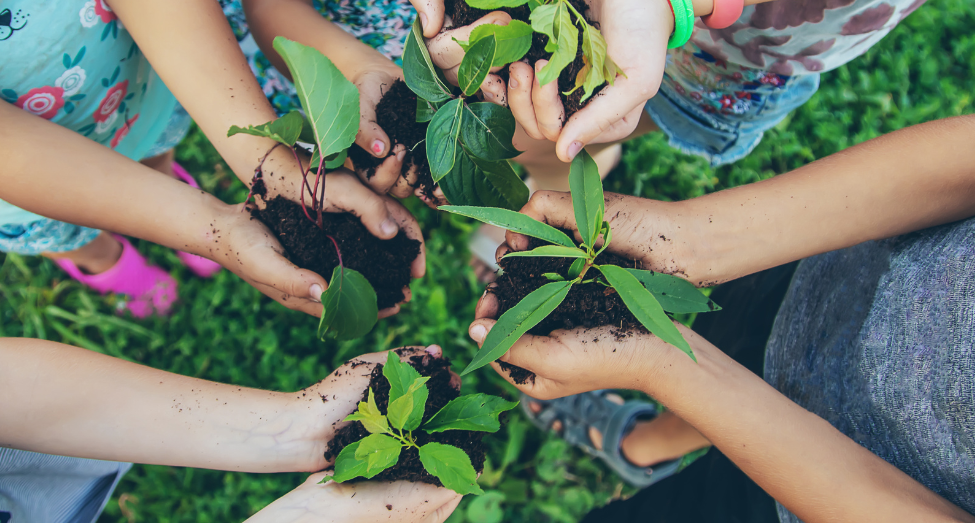Be Picky with Plastics
Want more great tips? Sign up for our free updates!
Plastics are everywhere – convenient, cheap, and nearly impossible to avoid. But they come with hidden costs. Many plastics contain harmful chemicals that leach into your food and drinks, increasing exposure to substances linked to health concerns. They also contribute to long-lasting environmental pollution. These chemicals may be intentionally added, for example, to make the plastic flexible or flame retardant, or they may be contaminants from recycled plastic feedstock.
The good news? You can take simple steps to reduce your plastic use—especially in the kitchen—and choose safer alternatives that protect your health and the environment.
1. Choose safer materials for food and drink contact
Opt for storage containers made of glass (e.g., Pyrex), stainless steel, or lead-free ceramic and kitchen utensils made from wood, bamboo, or stainless steel. These materials are safer than even “safer” plastics, which can contain chemical additives that may not be well-tested for long-term health effects.
2. Buy fresh, unpackaged foods—without plastic, when possible
Shop farmers markets, produce aisles, and bulk bins to minimize plastic packaging. Whole, unprocessed foods are less likely to be contaminated with chemicals from plastic during processing and storage.
3. Take special care when using plastics in the kitchen
- Avoid heat: Avoid microwaving plastic, even if labeled “microwave safe.” Heat accelerates leaching.
- Cool before storing: Allow hot foods to cool before placing them in plastic containers.
- Avoid storing fatty or acidic foods in plastic: These foods can absorb harmful chemicals more easily.
- Properly maintain plastic items: Hand wash plastics to reduce wear and tear. Discard any plastic items that are scratched or damaged.
4. If you use plastic, choose safer resin codes
Look for these numbers on the bottom of containers:
- #2 HDPE (high density polyethylene): Found in bottled milk, water, juice, yogurt cups, and some plastic bags.
- #4 LDPE (low density polyethylene): Used for bread bags, frozen food bags, fresh produce bags, PVC-free consumer cling wraps, resealable zipper bags, and some bottles.
- #5 PP (polypropylene): Common in food storage containers, deli soup containers, yogurt containers, straws, and other clouded plastic containers, including baby bottles.
5. Avoid PVC (polyvinyl chloride, #3)
Commonly known as vinyl, PVC (polyvinyl chloride, #3) is found in consumer products like shower curtains, toys, and packaging. It often contains phthalates and releases toxic chemicals throughout its lifespan. Safer alternatives are widely available.
6. Say no to polycarbonate (PC #7) to avoid BPA
Polycarbonate is a hard, clear plastic used in some reusable water bottles, baby bottles, commercial water jugs, and kitchen appliances like automatic coffee makers and food processors. Choose glass or unlined stainless steel for drink containers and look for appliances without plastic in food contact areas, such as French press coffee makers, stainless steel stick blenders, or glass jar blenders.
7. Avoid products made from polystyrene (PS #6)
Found in styrofoam food trays, disposable cups and bowls, carry-out containers, and opaque plastic cutlery, polystyrene can leach styrene—a neurotoxin and possible carcinogen.
8. Choose plastic-free toys when possible, especially for young children
Young children often put toys in their mouths, increasing their risk of chemical exposure. Plastic toys may include toxic chemical contaminants from recycled feedstock. Choose toys made from unpainted wood, cloth, plush, and games or puzzles made of paper. Opt for a frozen washcloth instead of a plastic teether. Avoid giving children plastic electronics like cell phones or remote controls as toys, because they may contain harmful additives such as flame retardants.
9. Speak up for plastic-free solutions
Most plastics aren’t truly recyclable—today less than 10% of plastics are recycled. Much of it ends up polluting communities and oceans, harming wildlife and ecosystems.
- Advocate for change: Urge policymakers and retailers to support bans on harmful plastics and invest in safer alternatives.
- Spread awareness: Share tips and resources with family and friends to build momentum for change.
Help us fight for a toxic-free future! We need people like YOU to stand up for the issues you care about. Together, we can build a safe and healthy world.

